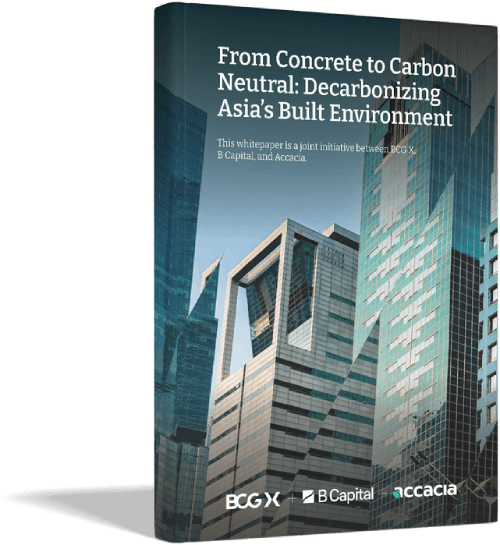Around the world, main streets serve as cultural and economic powerhouses that shape the identities of the cities they anchor. In its 34th year, Cushman & Wakefield’s Main Streets Across the World report confirms the value of main streets worldwide, key economic and social trends shaping their value, and the role they play in crucial global and local business decisions.
A New Era of Main Streets
Despite economic challenges, main streets have shown remarkable resilience as headline rents globally finally surpass prepandemic levels. Retailers continue to target prime locations for their strategic importance and potential for customer attraction, demonstrating their flexibility and strength by adapting to shifting economic conditions and consumer demands. Challenges like rising interest rates and inflation have dampened consumer confidence—yet forecast further rate cuts bring a hopeful outlook for recovery. Retailers are navigating cost pressure challenges while adapting to shifting consumer loyalty trends that demand an omnichannel customer journey, making main street locations increasingly critical arenas for longterm business growth.
Download the Report Read MoreGlobally and especially in Singapore, the race to Net Zero has long begun. Like running any race, the motivation and plan must be clear. This paper lays out the urgency and steps to win this race for both commercial real estate owners and occupiers.
Net Zero buildings enhance resilience to energy supply disruptions and reduce dependence on fossil fuels. Although there may be initial costs, long-term savings through reduced energy expenses and increased property value are significant benefits. Net Zero buildings also offer a healthier and more productive environment for tenants, leading to higher occupancy rates and rents.
Finally, a couple of case studies demonstrate the potential savings for typical landlords and occupiers in the commercial space from optimising energy use (without additional capital expenditures) through simulation-based solutions; adopting the smart scheduling of energy use can lead to substantial cost and emission reductions.
Download the Report Read MoreThe Indian ports sector is witnessing increased private sector participation, particularly by way of Public-Private Partnerships (“PPP”). The government has facilitated private sector participation by adopting investor friendly PPP models and streamlining tender processes and concession agreements for major ports. Due to multiple regulatory authorities and differing practices of port authorities, mergers and acquisitions in the ports sector in India are associated with unique considerations that potential acquirers should bear in mind. This note discusses the key regulatory and contractual considerations relevant to mergers and acquisitions in the ports sector in India.

Partner,
S&R Associates

Associate,
S&R Associates

Counsel
S&R Associates

Partner
S&R Associates
The climate impact of the real estate sector cannot be understated, with buildings contributing nearly 40% of global carbon emissions. Asia, home to over half of the world’s urban population, plays a critical role in this equation, with the region’s emissions projected to increase as urbanization and development accelerate.
With approximately 70 billion square meters of real estate expected to be developed in Asia over the next two decades, the region has the potential to not only reduce emissions but to set new standards in sustainable urban planning and construction.
Key Decarbonization Strategies for Asia:

A Path Forward for a Sustainable Asia
The decarbonization of Asia’s built environment represents both a challenge and a $47 trillion economic opportunity, driven by the need to align with global climate goals while catering to the unique demands of the region. Achieving this requires a targeted approach, one that equips developers, investors, and policymakers with strategies that balance sustainability with Asia’s rapid growth.
To dive deeper into these strategies, download the whitepaper “From Concrete to Carbon Neutral: Decarbonizing Asia’s Built Environment”.

Founder, CEO
Accacia
October was a difficult month for Asian Real Estate (RE) securities and REITs. We mentioned in last month’s update that we expected volatility given the upcoming elections in both the US and Japan, along with recent economic data that had reduced expectations of more aggressive Fed interest rate cuts. Expectations of a Trump victory were clearly anticipated in equity, fixed income, currency, and crypto markets. The Asian RE universe fell by more than 7% in USD, with much of the weakness coming from exchange rates. Back in 2016, Asian RE Securities and REITs suffered after Trump’s surprise victory, initially falling by 6% in the weeks after the election and significantly trailing the SPX, which rose over that same period. However, the sector rallied by nearly 10% from the start of 2017 until mid-year when Trump officially took office and subsequently rose by 15.5% in 2017. Given the outcome was less of a surprise this time around, we believe the market had somewhat priced in a Trump victory already.
While the risks of accelerating inflation due to pro-cyclical policies are a concern, there are other forces that will help contain inflation, such as rising productivity; and while tariffs may spike US inflation initially, they are likely to hurt the economy and some US companies due to higher input costs and potential retaliation from trading partners. China is cautious in unleashing additional stimuli until Trump takes office, which has led to additional disappointment in the region. While it is hard to estimate the full potential impact on rates and Asian growth from Trump’s anticipated policies, the sector performance in October was worse than in the months after Trump’s 2016 surprise victory. Therefore, we are hopeful that we will see some bottoming soon given the sharp decline in stocks and forecasted recovery in DPUs going into 2025 and 2026.
Download the Report Read More